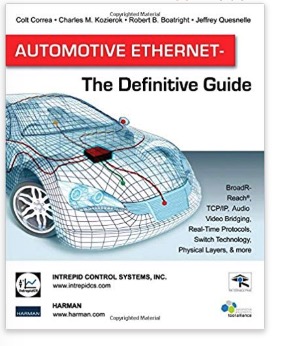Recent Posts
CAN-in-Automation (CiA) To Launch CAN XL During International CAN Conference
Posted by on
Today, CAN-in-Automation (CiA - not related to the American Homeland Security Department) announced its intention to launch yet another flavor of the ever-popular CAN Bus technology, namely CAN XL, which supports an extra-large (XL) payload of up to 2048 bytes. For more information on CAN XL, we have to wait until after the announcement during the next International CAN Conference in March 2020.
Since its release in 1980, the standard CAN Bus (now tagged as "Classical CAN") was under constant scrutiny to overcome its limited transmission speed and limited physical network length (40m/120ft at 1 MBit/sec).
As a result, Bosch started development of CAN FD (Flexible Data Rate) in 2011 (released in 2012) in response to automakers' demand for increased bandwidth and more accurate "real-time" data. It took years for this new standard penetrate the market, and this process is still ongoing. We are now well into 2019, and standardization organizations, such as CiA or SAE, are still grappling with incorporating CAN FD into higher-layer protocols, such as CANopen and SAE J1939. Semiconductor manufacturers are still releasing new CAN Bus controllers and transceivers with CAN FD capabilities, while vendors in the CAN Bus marketplace struggle with updating their product lines of PC boards, gateways, breakout boards, and more. Add to this the effort of driver development for the various operating systems such as Windows, Linux (including all of its flavors), VxWorks, QNX, etc.
Before I continue, let me make a case for "Classical CAN": The standard CAN Bus technology is, due to its reliability plus a long list of ingenious features, the best choice for serial communication in embedded distributed (networked) control systems. CAN Bus is an excellent option for small embedded systems and, after all, automobiles as long as you utilize it within its original capabilities. As an example, look at the LIN (Local Interconnect Network) technology, which is slower but less expensive than CAN Bus; it serves applications that don't require the higher CAN Bus performance.
When it comes to increasing performance for industrial control systems, you are a fool not to look into Industrial Ethernet. The same applies to automotive applications and Automotive Ethernet because CAN Bus technologies cannot manage tasks such as collision prevention, lane departure warning, driver monitoring, and more.
In its announcement, CiA stresses the point that CAN XL was "designed to fill the gap between 100-Mbit/s automotive Ethernet," but claims that it competes with the 10 Mbit/s variant (the language used in the announcement is ambiguous in that regard). They also warn, "The higher the speed, the more energy is consumed. Saving energy is an important issue in many application fields."
I'd say, let's relax and sit back; there is no reason to become excited. By the time, CAN XL effectively reaches the market, it will be considered obsolete compared to improved and thus much more powerful Ethernet technologies. In the meantime, I will be waiting for CAN-SCFE (Supercalifragilisticexpialidocious).
Supplement June 1, 2020:
According to CiA's June 2020 CAN Newsletter, referring to CAN FD light: "CiA members have also started to develop a master/slave protocol based on CAN FD. It is intended for simple sensor and actuator communication. A typical example is modern LED lamps in passenger cars, which are somehow price sensitive. The CAN FD master node synchronizes the slave nodes with hundreds of LEDs. This simplifies the implementation of the CAN FD slave nodes, because there is no arbitration needed, since they just react on the master requests. It is intended to run such networks with one bit-rate and is therefore limited to 1 Mbit/s, which is fast enough for such applications." (See also: CAN XL and CAN FD light...).
I was under the impression that such tasks are sufficiently covered by the LIN bus. The comedy continues...
In the same newsletter:
Automotive Ethernet - The Definitive Guide
Ethernet, the most widely used LAN technology in the world, is taking the automotive world by storm. As the electronic content in cars proceeds to improve, Ethernet guarantees to gain performance and enable compelling and valuable applications.
In its 1,161 pages, Automotive Ethernet - The Definitive Guide describes how Ethernet technology has been adapted via Broadcom's new BroadR-Reach® standard to bring Ethernet hardware and applications to vehicles.
BroadR-Reach technology is an Ethernet physical layer standard designed for use in automotive connectivity applications.
BroadR-Reach technology allows multiple in-vehicle systems to simultaneously access information over unshielded single twisted pair cable.
Benefits for automotive manufacturers integrating the BroadR-Reach Ethernet standard include reduced connectivity costs and cabling weight.
 Loading... Please wait...
Loading... Please wait...


